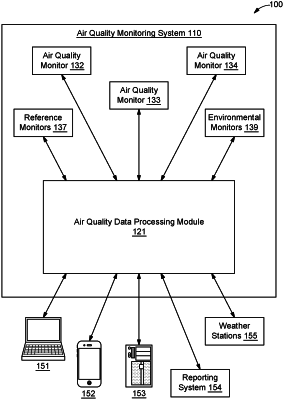| CPC G01N 21/3504 (2013.01) [G01N 33/0036 (2013.01); G01P 13/045 (2013.01)] | 14 Claims |

|
1. A source identification method for identifying sources of emission of at least one target chemical at a site, the source identification method comprising:
providing a predominate air quality monitor comprising:
a first sensor responsive to a first target chemical from the at least one target chemical; and
a first location at which the predominate air quality monitor is located;
measuring a first concentration of the first target chemical by the predominate air quality monitor;
providing a first plume of the first target chemical over a first region in the site;
providing a secondary air quality monitor comprising:
a second sensor responsive to a second target chemical from the at least one target chemical; and
a second location at which the secondary air quality monitor is located;
measuring a second concentration of the second target chemical at the secondary air quality monitor;
providing a second plume of the second target chemical over a second region in the site;
generating, when the first plume overlaps the second plume, a confounding signal using at least one of:
the first sensor, or
the second sensor;
identifying a first signal representative of measurement of the first target chemical and a separate signal representative of measurement of the second target chemical from the confounding signal;
separating the first signal representative of measurement of the first target chemical and the separate signal representative of measurement of the second target chemical from the confounding signal; and
analyzing the first signal representative of measurement of the first target chemical and the separate signal representative of measurement of the second target chemical to identify the sources of emission of the first target chemical and the second target chemical.
|